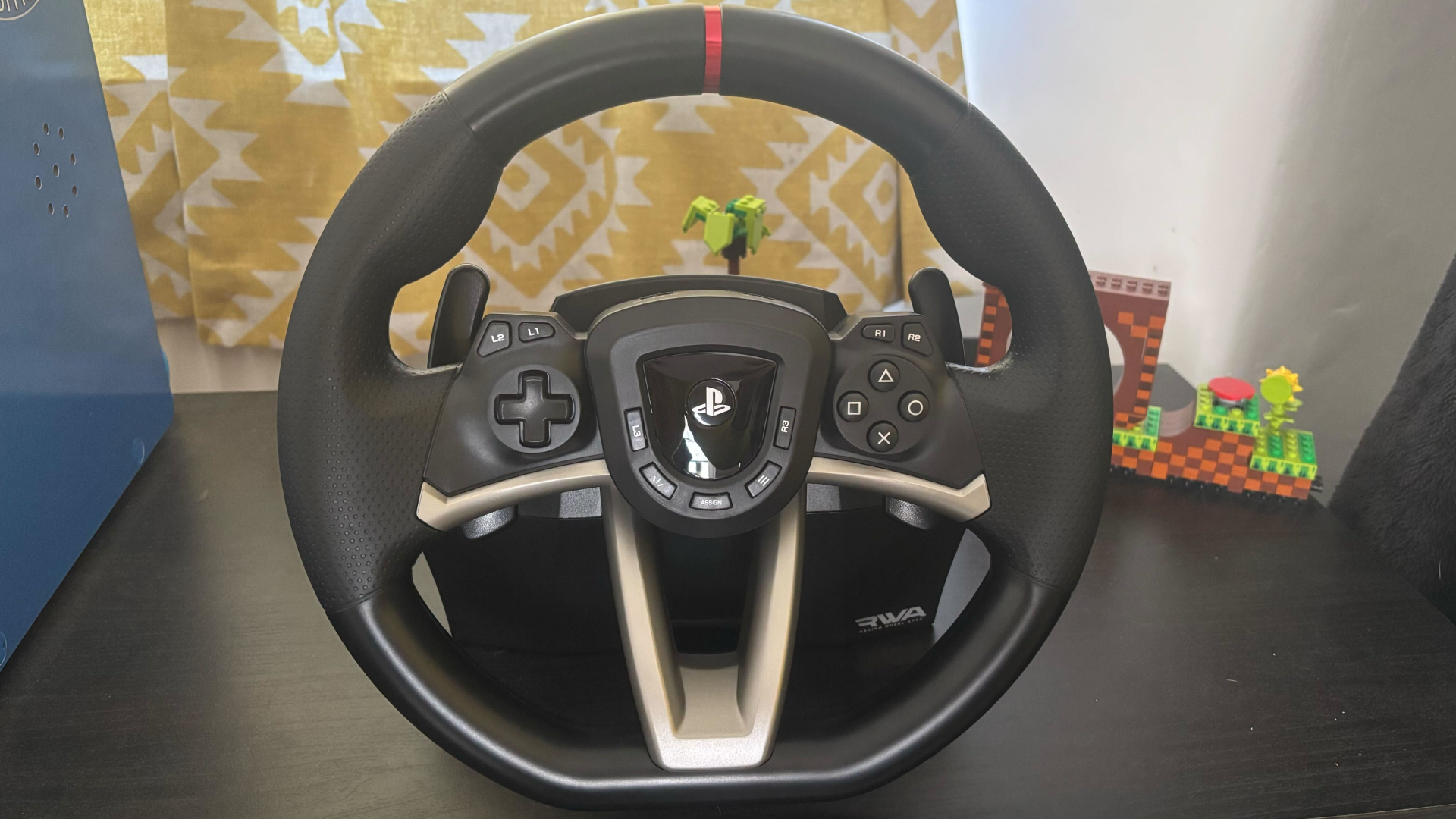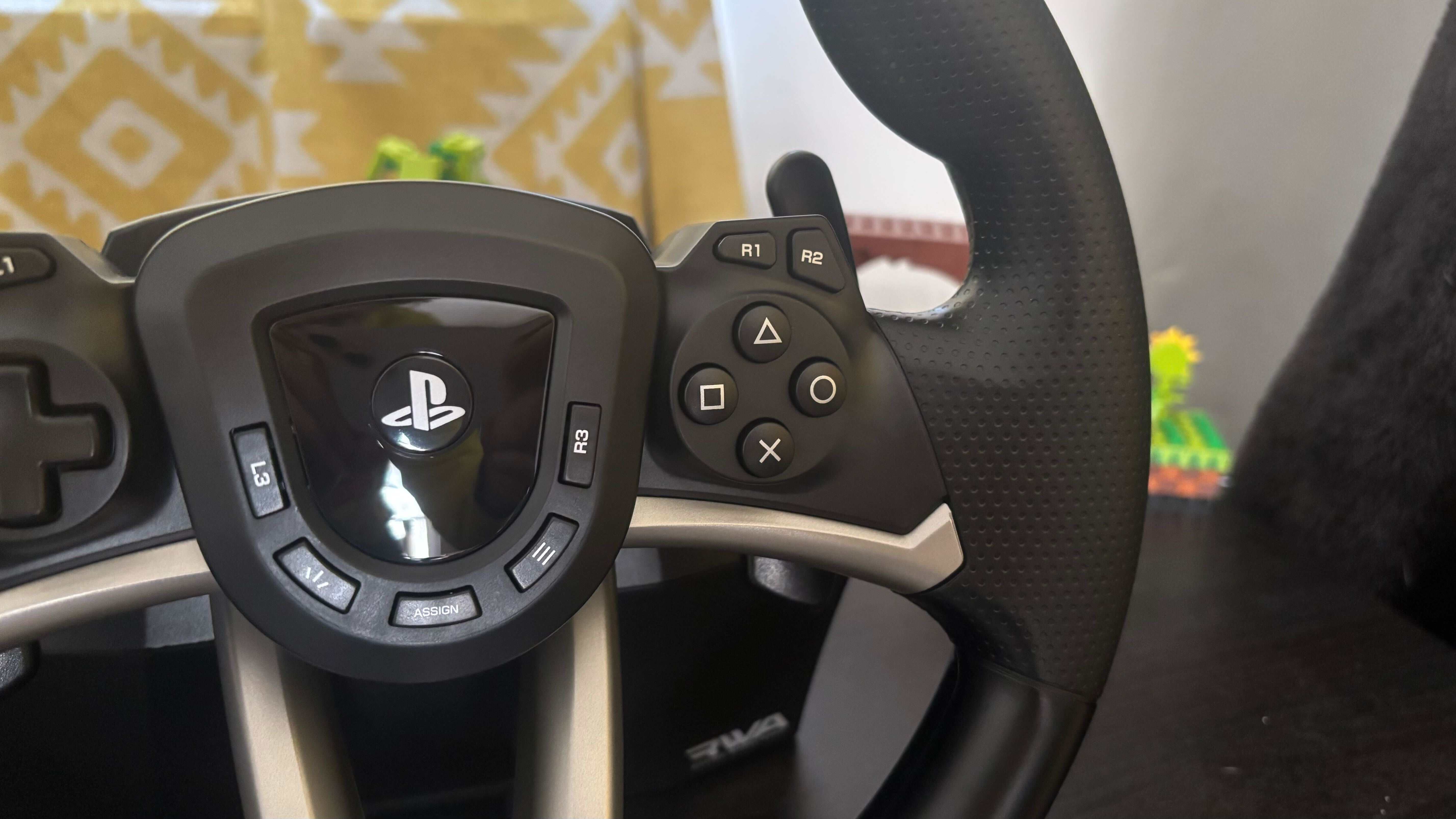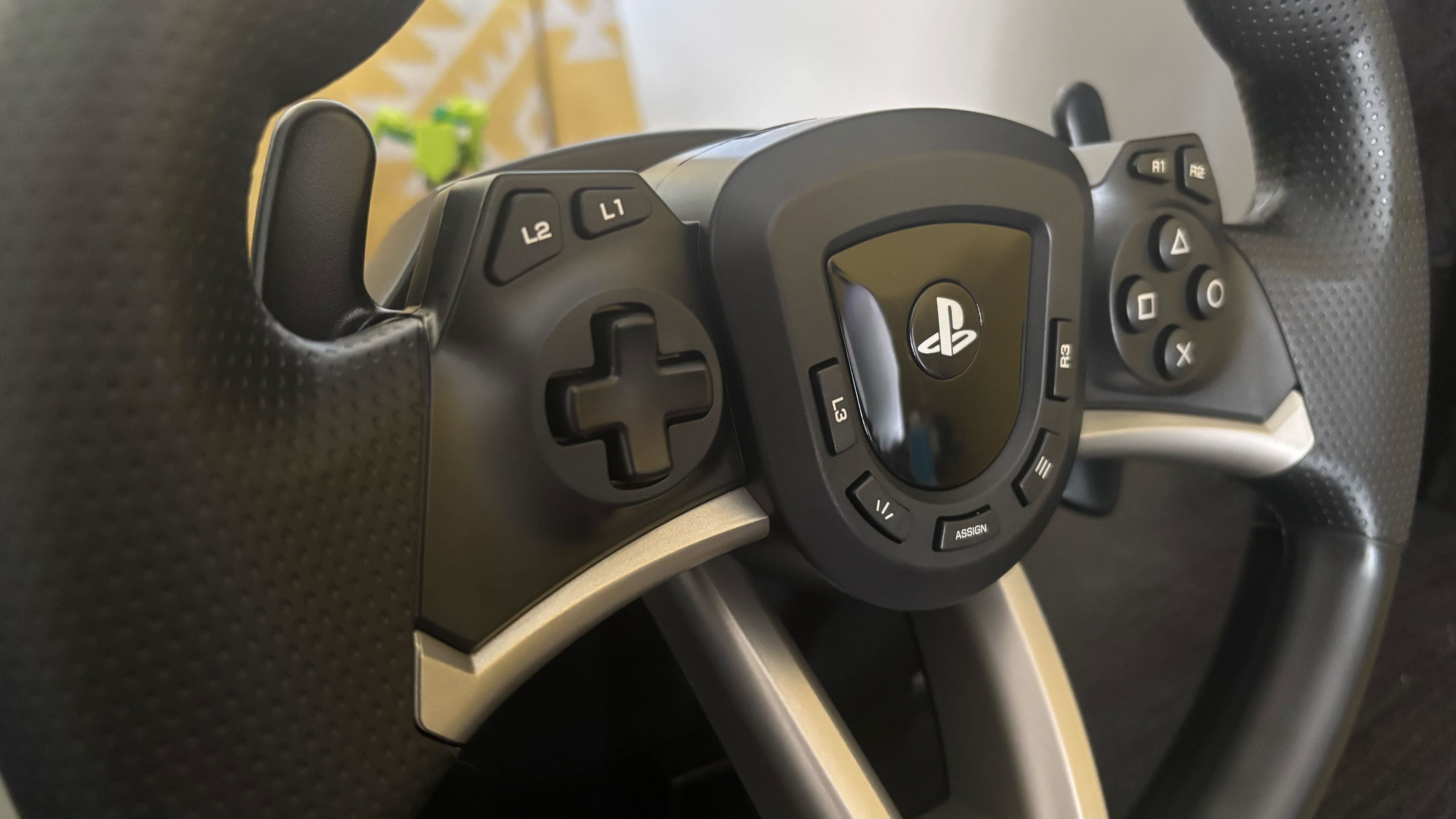
Hori Racing Wheel Apex for PlayStation: One-minute review
I’m glad that the Hori Racing Wheel Apex for PlayStation exists. When it comes to the PlayStation 5, there just aren’t all that many budget PS5 racing wheel options available. But the Apex is one I can just about recommend for those not wanting to shell out on some of the best racing wheels including the pricey Logitech G923 or the Logitech G Pro Racing Wheel.
The Hori Racing Wheel Apex for PlayStation costs significantly less than either of those products. And while I was generally happy with the performance it provides - not to mention the ease of setup - the concessions made to hit its low price point are immediately apparent.
Much like the Nintendo Switch-facing Hori Mario Kart Racing Wheel Pro Deluxe (with which the Apex has many similarities including its chassis and overall performance), build quality leaves much to be desired. You’re getting an overtly plasticky build here, exacerbated by a pair of unsatisfyingly weightless pedals.
Force feedback is also off the table, which will likely be a deal breaker for players looking to purchase a racing wheel for that added level of immersion and feel. But if you can get over these cutbacks and are just looking for an inexpensive steering wheel for Gran Turismo 7, F1 24, and more, you’ll still find an acceptable racing experience with the Hori Racing Wheel Apex for PlayStation.

Hori Racing Wheel Apex for PlayStation: Price and availability
The Hori Racing Wheel Apex for PlayStation is available to buy now at Hori’s website for $119.99 / £99.99. That’s just a touch higher than the Hori Mario Kart Racing Wheel Pro Deluxe ($109.99 / £89.99) and firmly places it in the budget category. Especially in the UK where it’s difficult to find a decent racing wheel under that £100 mark.
The key thing to note here is that while much more affordable than mid-range plug-and-play options like the Logitech G923 or the Thrustmaster T300RS GT Edition, you can expect features to be decidedly stripped back here. If you can afford pricier options like these, they are worth considering if you’d like features like force feedback and better overall build quality.
Hori Racing Wheel Apex for PlayStation: Specs
Hori Racing Wheel Apex for PlayStation: Design and features
Hori has used the Apex’s chassis before, chiefly with the Mario Kart Racing Wheel Pro Deluxe for Nintendo Switch. If you’ve seen that wheel, then you’ve essentially seen the Apex, too. The key difference here, naturally, is that the Apex is emblazoned with PlayStation’s logo and has a PlayStation-adjacent button layout.
Some button placements have shifted, too. On the Switch wheel, the ZL and ZR trigger buttons were found on the steering wheel itself. On the Apex, the left and right shoulder and trigger buttons are all lined up above the D-pad and face buttons respectively. There are also dedicated L3 and R3 buttons on the Apex, too.

The wheel itself is the best thing about the Apex in terms of design. The textured grips feel nice in the hands and ensure sturdy, non-slip play sessions. The flappy paddle gear switches behind these grips are significantly less refined, though, with a flimsy plastic build that feels like they could snap easily after long-term usage.
That same flimsiness also applies to the pedals, which are the same here as they were with the Mario Kart wheel. While they mostly get the job done, they (alongside the included clip-on footrest) have an overtly plastic and lightweight build, meaning they can easily slide around on harder surfaces.
The wheelbase, thankfully, is much sturdier and has a nice weight to it. You’ve also got two options here when it comes to securing the base in place; a clamp and a set of suction cups. You should avoid using the latter unless you lack a surface that you can easily clamp the wheel to. As with the Mario Kart wheel, I found the suction cups offered little to no purchase for the wheel on my desk. The included clamp, meanwhile, gets the job done just fine.
Hori Racing Wheel Apex for PlayStation: Performance
Despite my quibbles with some design and feature aspects, I can’t fault the Hori Racing Wheel Apex for PlayStation much when it comes to overall performance. The experience you’re getting here is far from mindblowing, especially thanks to the lack of force feedback, but it’s still more than up to the task of providing a decent wheel feel for less, offering robust value for money
I tested the Hori Racing Wheel Apex for PlayStation across PS5 and PC racing games, including Gran Turismo 7, EA Sports WRC, and F1 24. It’s clearly designed for PlayStation consoles first, as when loading into GT7, the wheel was ready to go with a preset control layout in place.

On PC, via XInput, some customization was required in F1 24 as the wheel wasn’t recognized in-game by default. In cases like this, you will need to set your own custom control layout. Thankfully there were no issues here, with buttons and steering all recognized as inputs without fuss.
I do miss the wider rotations available on mid-range racing wheels. The Hori Apex caps out just 270 degrees, which means it’s not best suited to serious simmers like iRacing, Assetto Corsa EVO, or indeed Euro Truck Simulator 2. But you should get by just fine in more casual friendly racers like GT7 and F1 24.
Should I buy the Hori Racing Wheel Apex for PlayStation?

Buy it if...
Don't buy it if...
Also consider...
If the Hori Racing Wheel Apex for PlayStation isn’t quite doing it for you, have a look at these two PS5-compatible alternatives.
How I tested the Hori Racing Wheel Apex for PlayStation
- Tested for one week
- Tested across PS5 and PC
- Compared with the Hori Mario Kart Racing Wheel Pro Deluxe
I tested the Hori Racing Wheel Apex for PlayStation over the course of a week. During that time, I hooked the wheel up to both PS5 and PC to test a variety of racing games including Gran Turismo 7, F1 24, and EA Sports WRC. While a lack of force feedback and a limited rotation means it’s not the most ideal for sim racers, I did find the Apex to be a good fit for arcade racers like Tokyo Xtreme Racer.
First reviewed March 2025







